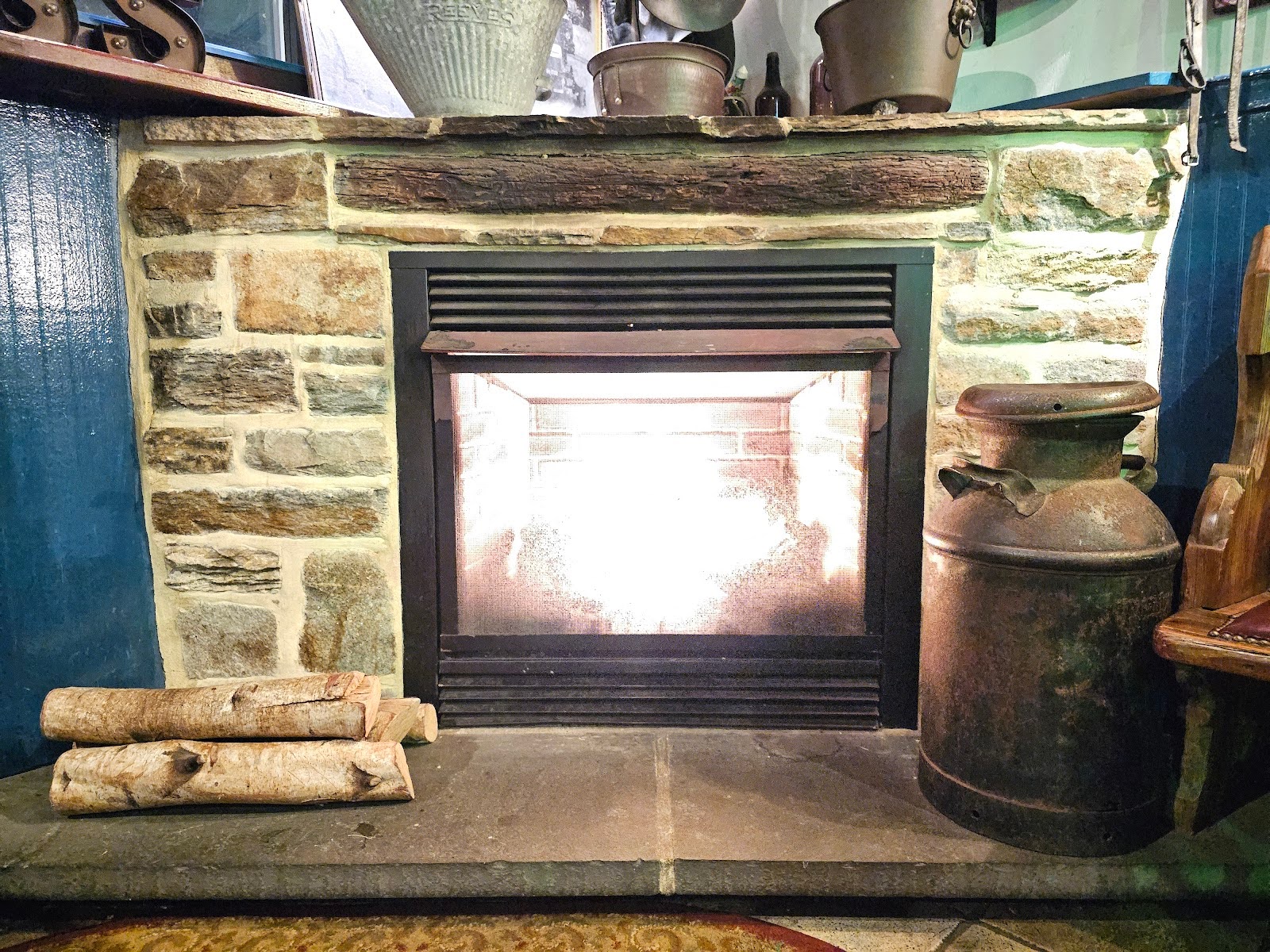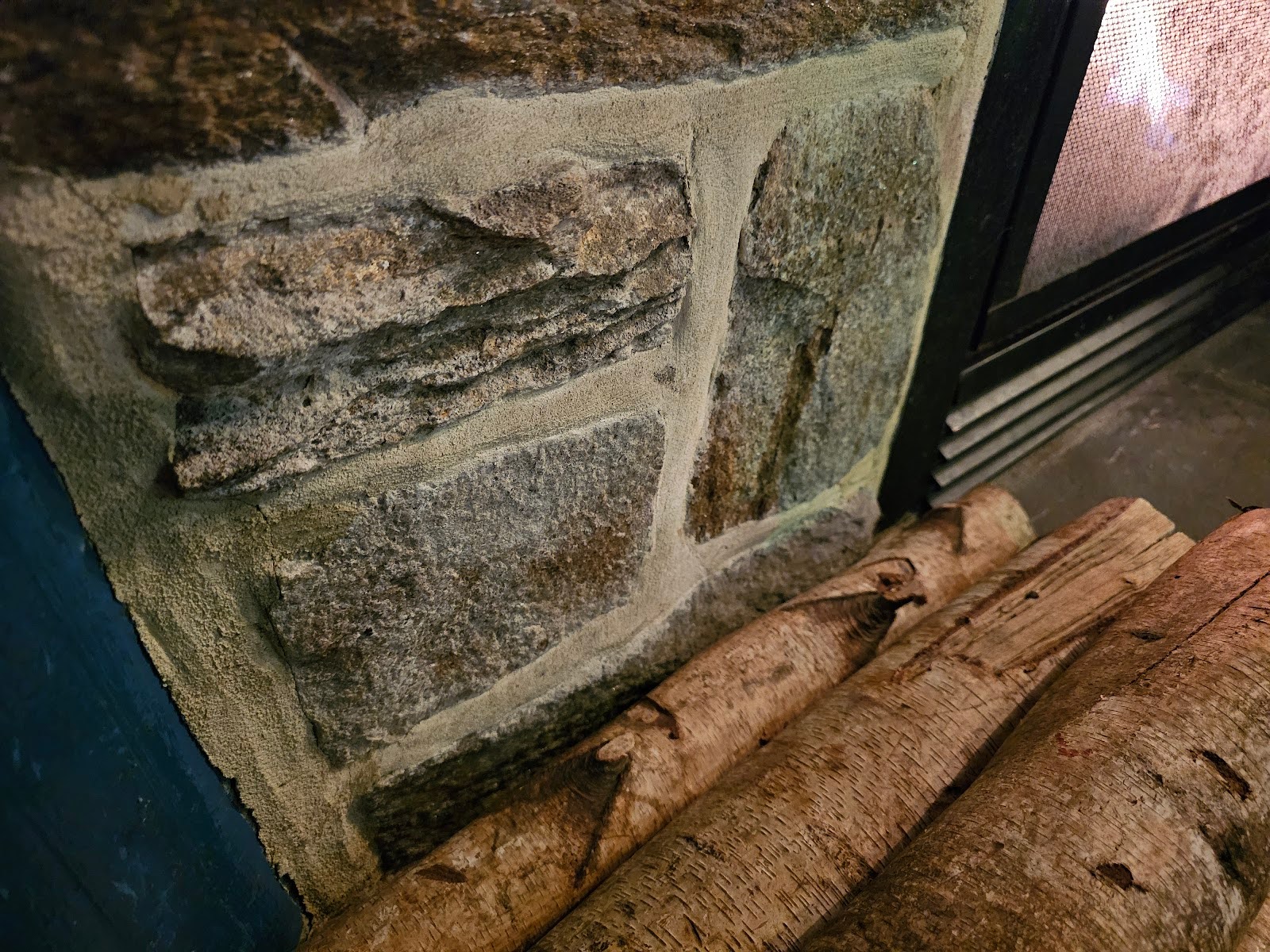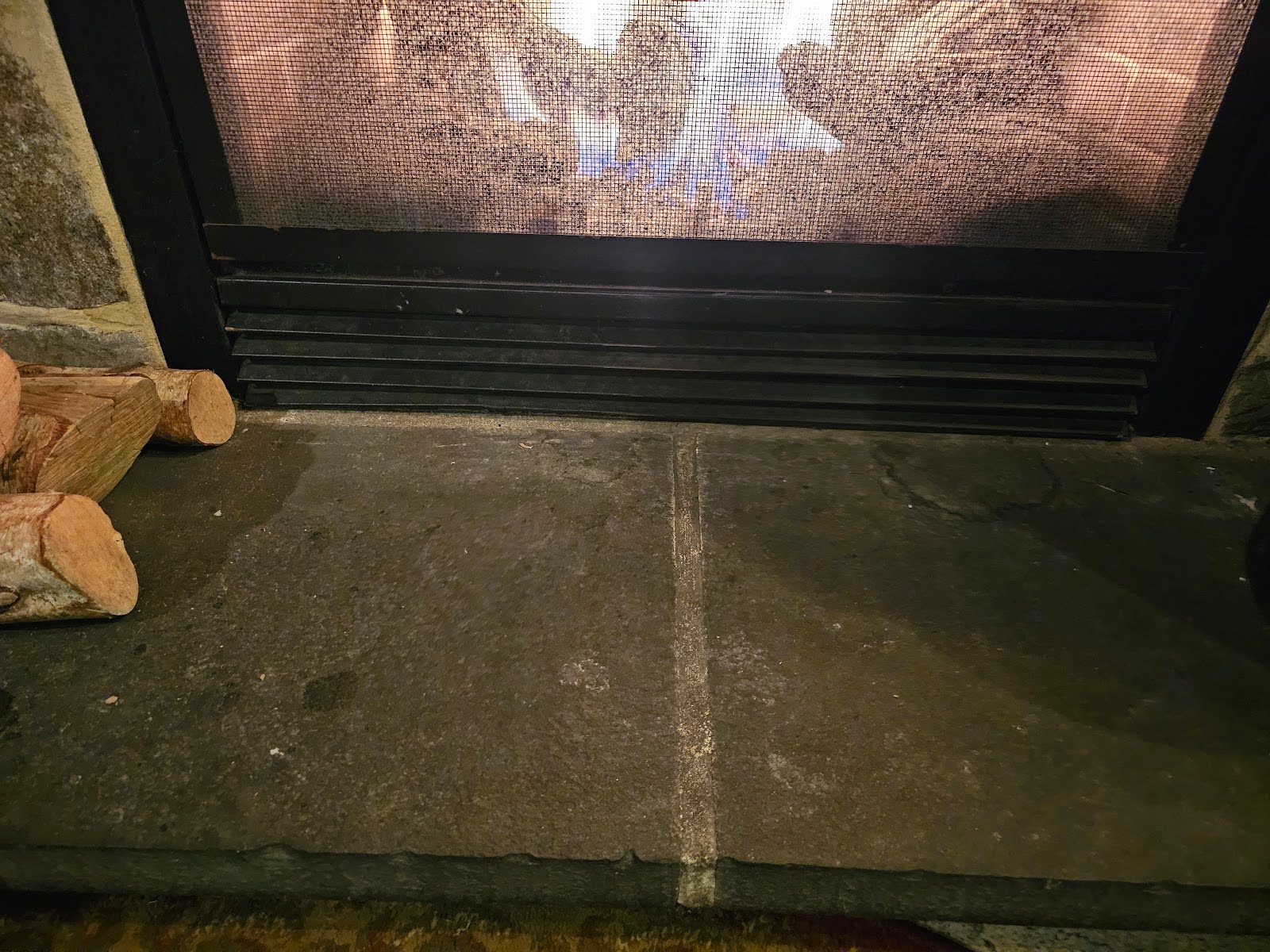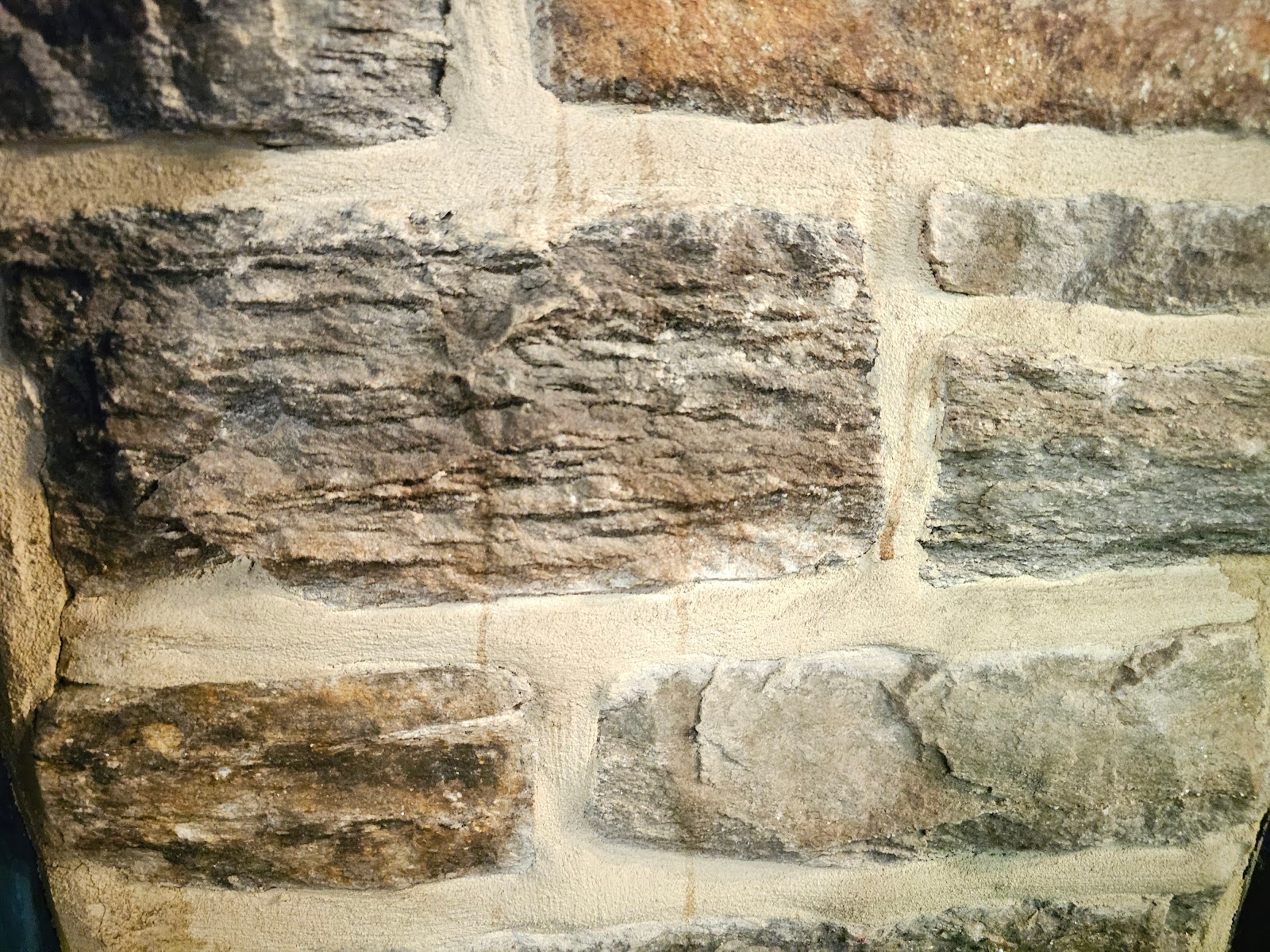Elegant and Efficient Heating with Granite Gas
Recently, we had a chabce to take a look at a really interesting historic looking fireplace. The fireplace itself actually isn’t nearly as old as it’s intended to look. In fact it doesn’t even burn actual natural wood, instead it has a gas log insert type setup installed in a granite surround. Flagstone is used a top the fireplace, but it’s not really built like a mantle. Instead the original chimney at this fireplace, which was likely demolished many decades ago, is set into a tabletop type configuration or arrangement. The wooden mantle that was possibly original to the former fireplace assembly still remains but is now surrounded by granite stonework.
You can’t exactly carbon date stone or masonry to figure out its age, but the face of the grout is relatively clean and it’s clear that the mortar is relatively modern. Like surfaces which have been repointed or tuck pointed, more newer mortar has been installed, but it’s not necessarily clear that there is a substrate historic or deteriorated older mortar set behind this newer surface.

With the historic knick knacks and trinkets set around the mantle area of the fireplace, it really gives the feeling of a historic fireplace out of a log cabin or something in the mountains, but this building is actually close to the city.
The mortar used at this fireplace, just based on the surface texture itself, appears to have a very low lime content with a very high portland content. Portland mortar will make sand granules stand or stick to the finished surface of the struck mortar joints, more than low portland or lime binder only type mortars. Some mortars, particularly historic mortars are made by mixing a combination of lime and sand without the use of portland.
At the time of the original construction in many of the historic buildings here in Washington DC, portland mortar was not widely used, in mass production. These details are particularly important when repointing or tuck pointing or in the historic restoration of brick masonry here in Washington DC.

One important note that might stand out if you’re paying close attention is that the hearth of the fireplace is not made with the same granite stone used at the surround of the gas logs insert. Instead, this hearth is built with 2.5 inch thick thermal blue stone. This type of thermal bluestone is very similar to other types of granites and basalt type stones, but it’s technically a little bit different. Basalt stones are found throughout much of the Earth, on almost all continents. This particular thermal blue stone happens to come from an area in lower Pennsylvania and was commonly used here in Washington DC, going back generations.

A closer view of the granite stone work follows below. Here you can see that although this is technically ashlar stone, it has what we would consider to be a split face. The split face is relatively rough and inconsistent with the otherwise close to rectilinear shape of the stone work.
Repointing stone work of this type is relatively similar to repointing or tuck pointing historic brick masonry. Historic Brick masonry, at the sides and rear facades of many of the historic buildings here in Washington DC will often need to be repointed to maintain the structural integrity of those facade walls. As we mentioned above, it’s extremely important to use a contractor who understands the difference between line mortars and modern mortars. Many contractors who don’t understand these differences will come in to the city and repoint historic buildings using the wrong mortar which can cause exponentially complicated damage to the building facade.

Our company, Dupont Tuckpointing and Masonry, specializes in masonry restoration, historic brick repointing, and tuckpointing services in the Washington D.C. area. These buildings are uniquely historic, and their preservation requires skilled masons who are technically trained in the best practices and knowledge of proper restoration techniques.
We understand the significance of maintaining the architectural integrity of these historic structures, and our team of experienced professionals is dedicated to delivering exceptional craftsmanship. Whether you require masonry restoration, tuckpointing, or brick repointing services, we are here to help.
At Dupont Tuckpointing and Masonry, we take pride in our work and strive to ensure that every project is executed with the utmost care and attention to detail. We are committed to preserving the rich heritage of Washington D.C.’s built environment for generations to come.
If you have any questions or needs regarding masonry restoration, historic brick repointing, or tuckpointing services, please do not hesitate to reach out to us. We would be delighted to assist you and provide you with the expertise and quality workmanship that your historic property deserves.
You can reach us by telephone at (202) 796-7644 and you can reach us by email from the contact form on our website at https://duponttuckpointingmasonrydc.com/contact-us/.




